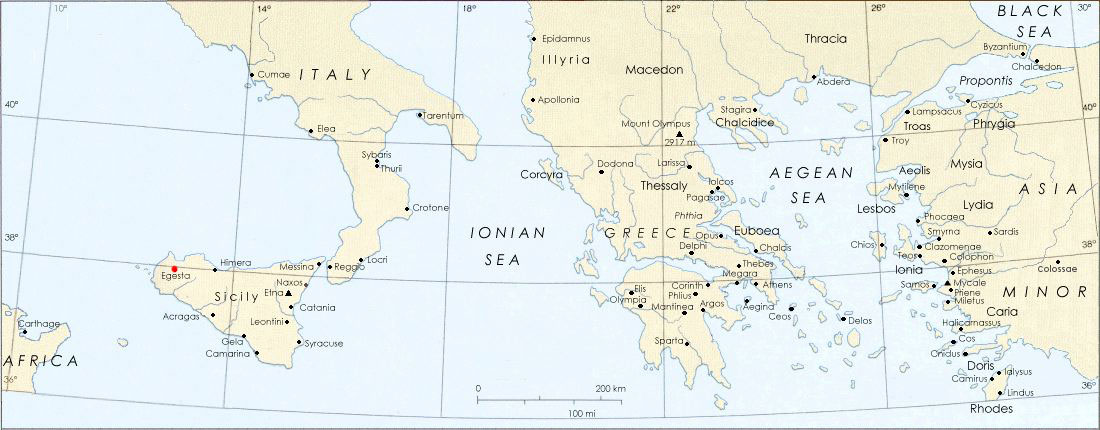An ancient city of Sicily, located about 2 miles (3 km) northwest of modern Calatafimi. It was the chief city of the Elymi, a people for whom Thucydides claimed a Trojan origin; they are archaeologically indistinguishable in the Early Iron Age (c. 1000c. 500 BC) from their Sicanian neighbours.Culturally Segesta was Greek, but it generally took the Carthaginian side against its Greek neighbours; boundary disputes with Selinus, for instance, were frequent from 580 BC onward. When in 409 Hannibal, son of Gisgo, sacked Selinus, Segesta became a Carthaginian ally. Early in the First Punic War, however, the inhabitants massacred the Carthaginian garrison and allied themselves with Rome. Segesta was favourably treated under Roman rule; it became a free city, and the territory of Eryx may have been assigned to it. (Encyclopędia Britannica Online.)
